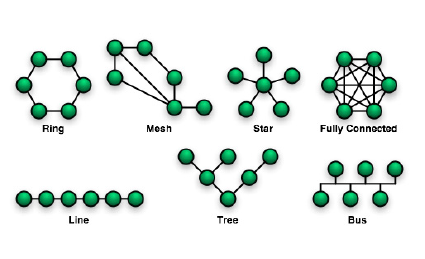
Wireless & Mesh Networks
Wireless mesh networks (WMNs) are dynamically self-organized and self-configured, with the nodes in the network automatically establishing an ad hoc network and maintaining the mesh connectivity. WMNs are comprised of two types of nodes: mesh routers and mesh clients. Other than the routing capability for gateway/bridge functions as in a conventional wireless router, a mesh router contains additional routing functions to support mesh networking. Through multi-hop communications, the same coverage can be achieved by a mesh router with much lower transmission power. To further improve the flexibility of mesh networking, a mesh router is usually equipped with multiple wireless interfaces built on either the same or different wireless access technologies. In spite of all these differences, mesh and conventional wireless routers are usually built based on a similar hardware platform
Introductory Example
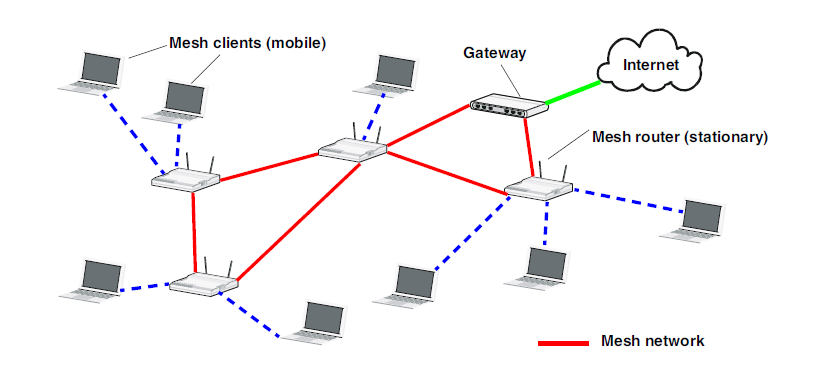
Example Scenario: Infrastructure/backbone Wireless Mesh Network
Multi-hop network: one or more routers on path between source and destination node
Mesh network: multipoint to multipoint connectivity
Mesh Networking
Full mesh: each node is directly connected to all other nodes
Partial mesh: not all nodes are directly interconnected
Network Topologies
Definition of a Wireless Mesh Network (WMN):
In short: Multi-hop network built from wireless routers
More detailed: Multi-hop peer-to-peer wireless network in which nodes connect with redundant interconnections and cooperate with one another to route packets
Characteristics of a WMN
WMN‘s are considered to be a subclass of ad hoc networking
Routing nodes are stationary (unlike in Mobile Ad Hoc Networks, MANET‘s)
WMN‘s have properties of an autonomic system
Self-Configuration
Self-Healing (redundant, decentralized, no central point of failure)
Self-Management
Self-Optimization
Challenging tasks for a good system design
High overall capacity
Spatial diversity
Power management
Important constraints
Shared bandwidth & interference
Number and location of nodes
Application Scenario
Broadband Internet Access (last mile)

Wired infrastructure often too expensive for last and middle mile:
Rural areas
Weakly populated countries
Cost factors in wired infrastructure:
Number of endpoints
Cable costs (length, unfriendly terrain)
Issues in wireless solutions:
Range and bandwidth (mesh networking is the key)
Costs and maintenance requirements of hardware
Application Scenario
Community Mesh Network
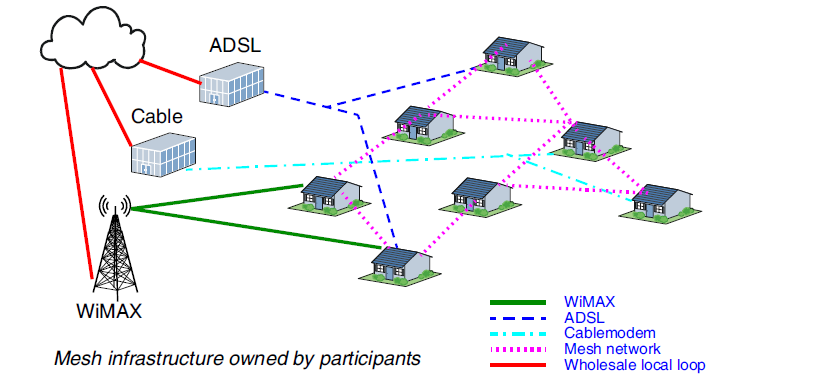
Spontaneous Mesh Network
Temporary mesh network for collaboration (usually with portable wireless devices) Scenarios
Industry Breakdown
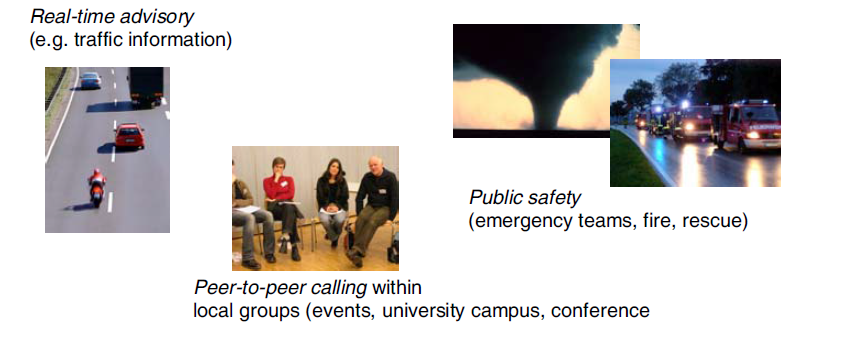
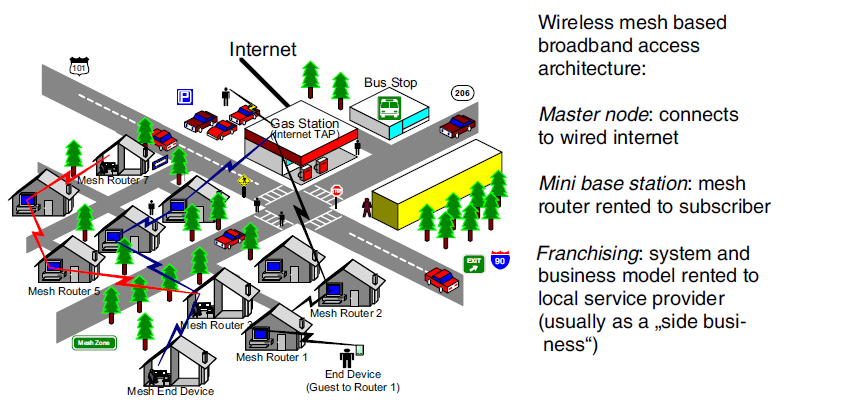
Summary
A wireless mesh network is a multi-hop network built from wireless routers and has properties of an autonomic system
- Wireless mesh networks have promising application areas, e.g.
- broadband internet access (last mile)
- community mesh networks
- city-wide wireless voverage (blanket)
- spontaneous mesh networks
- industry breakdown
- The wireless communication range can be calculated exactly in theory, but in practice the topology of the terrain has often a limiting influence
- Advanced wireless systems use adaptive modulation/coding schemes to leverage range and capacity for optimum performance
- Wireless networks may use several channel access schemes (CDMA/CA, MACAW, TDM, ...), which are clearly different from wired solutions
- Wireless mesh networks have evolved over more than 30 years and allow to build up viable networks if the communication range and node density fit reasonably

